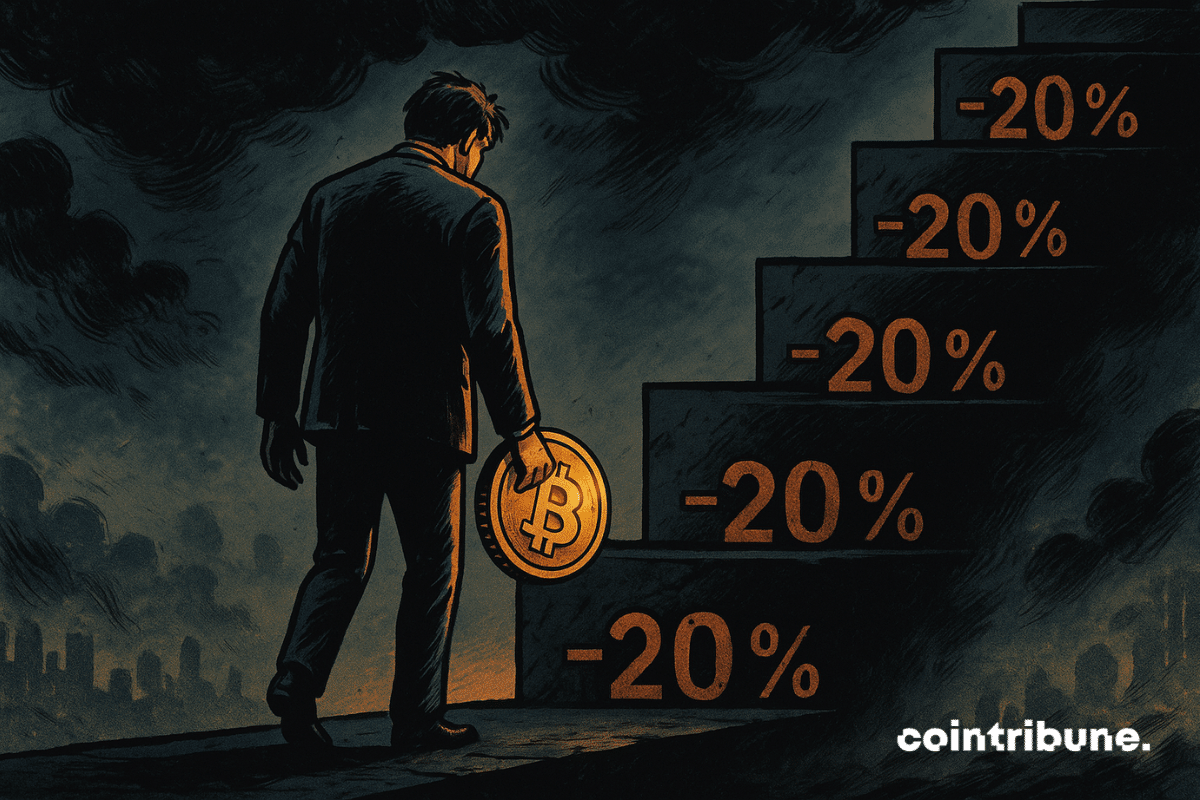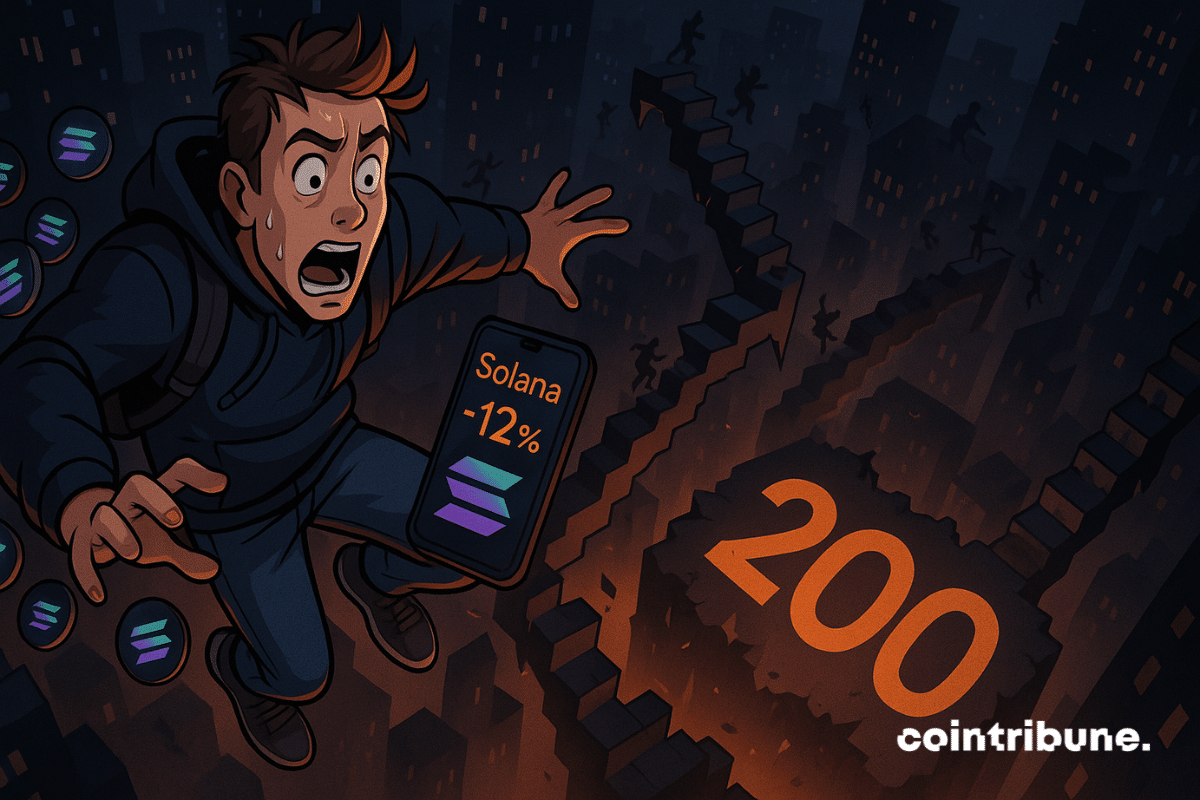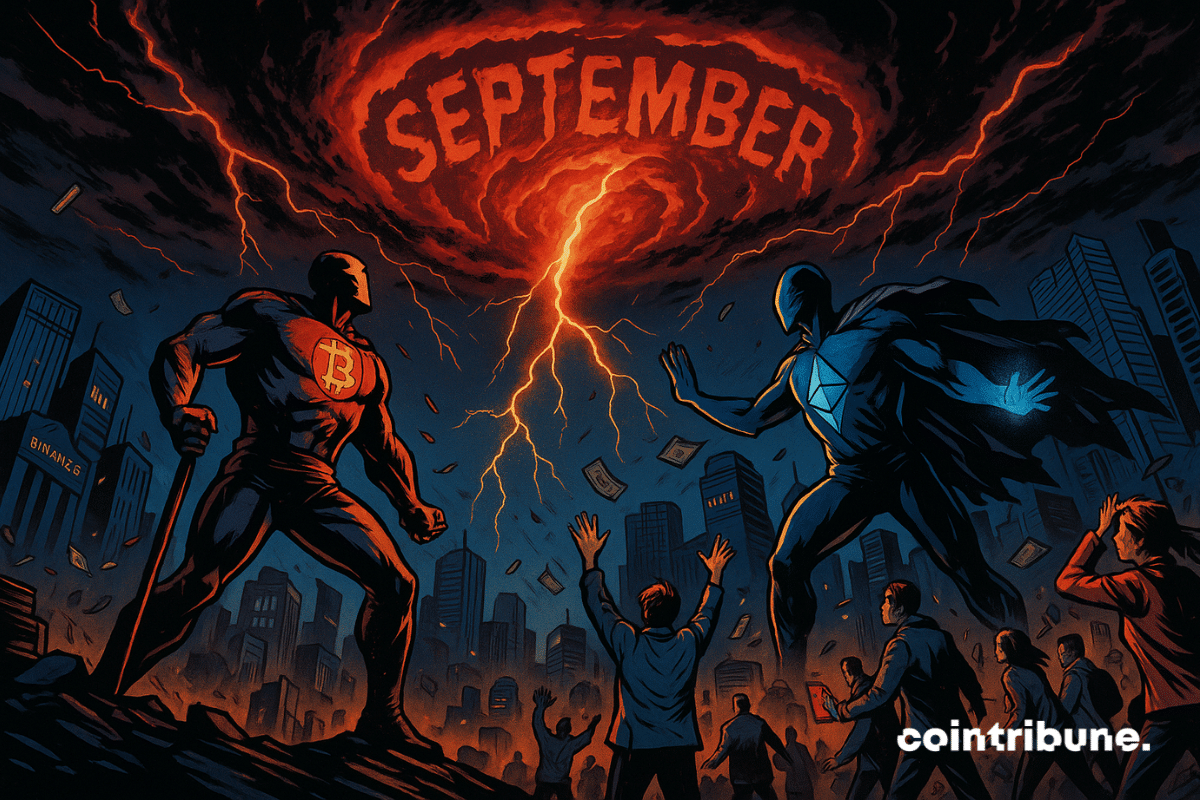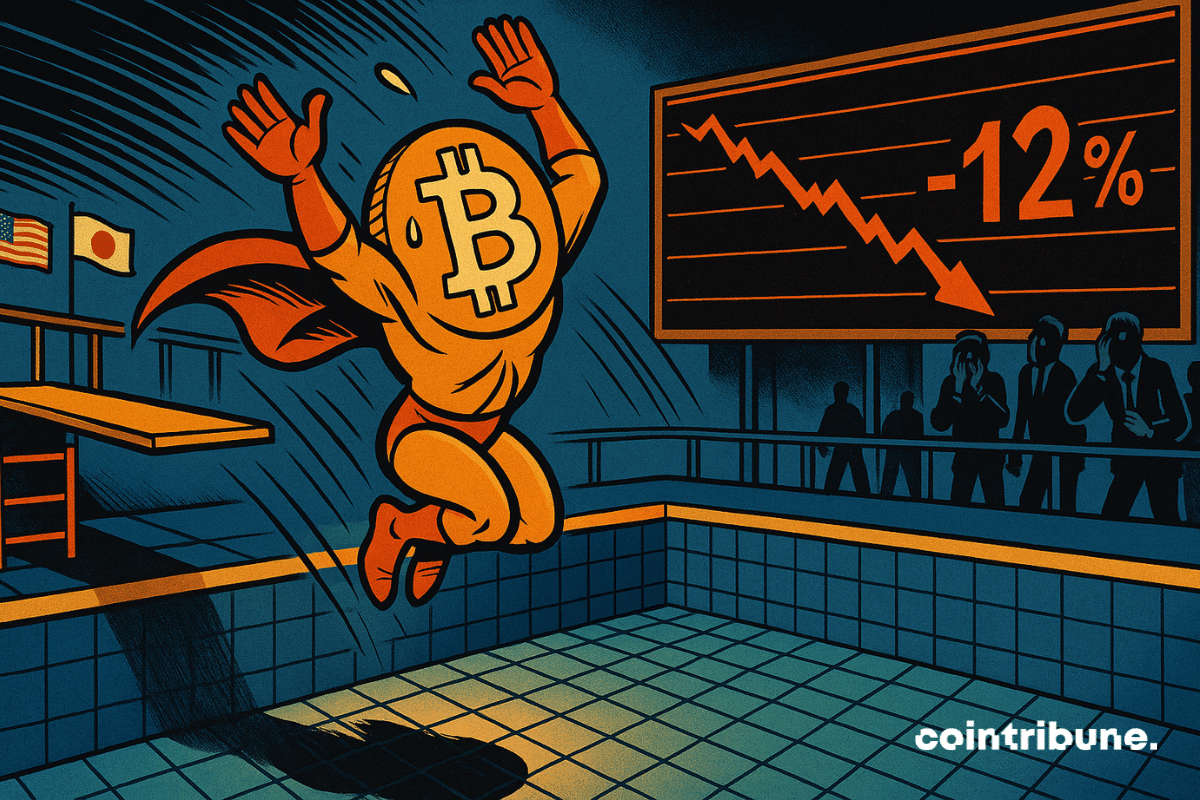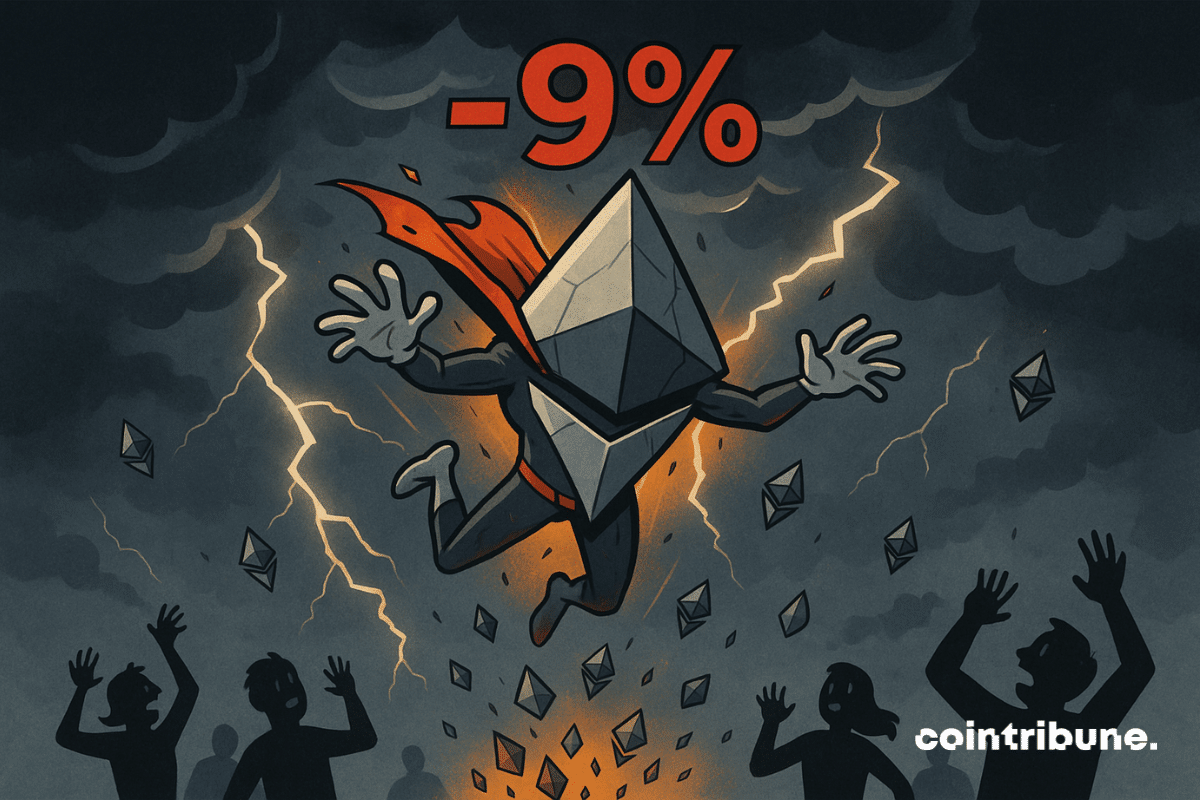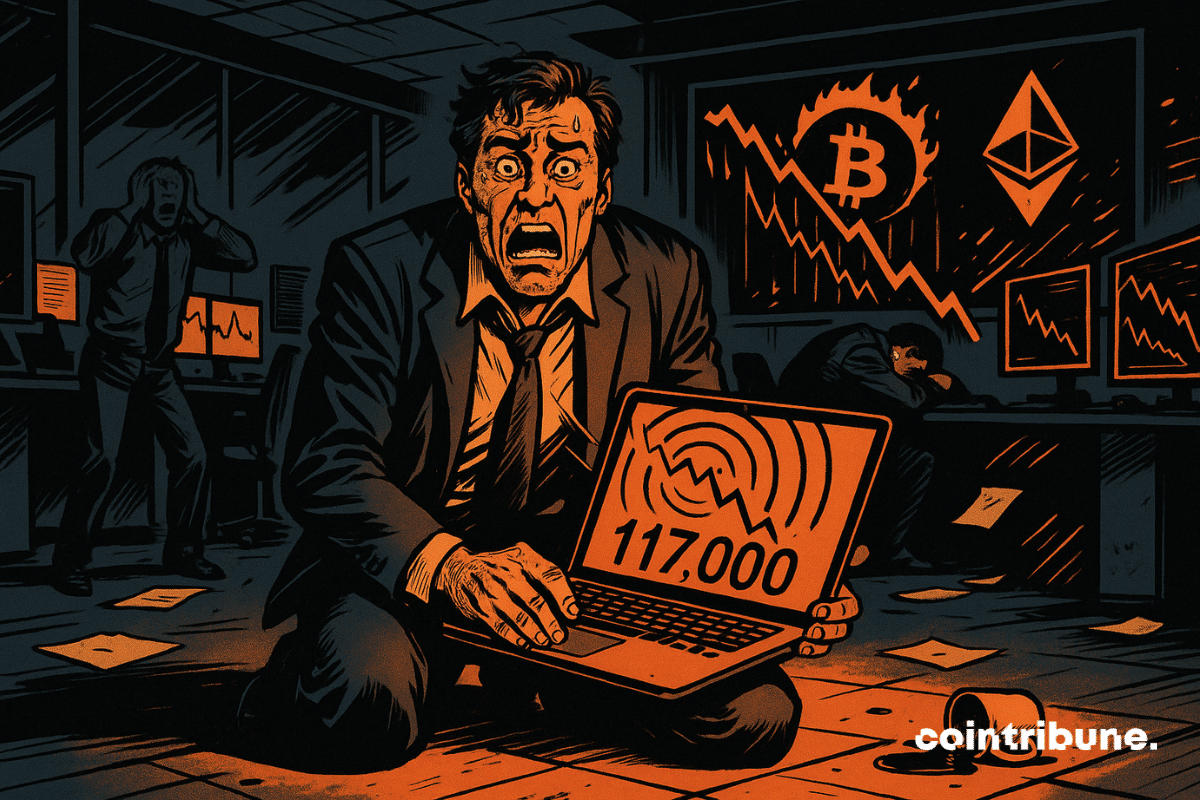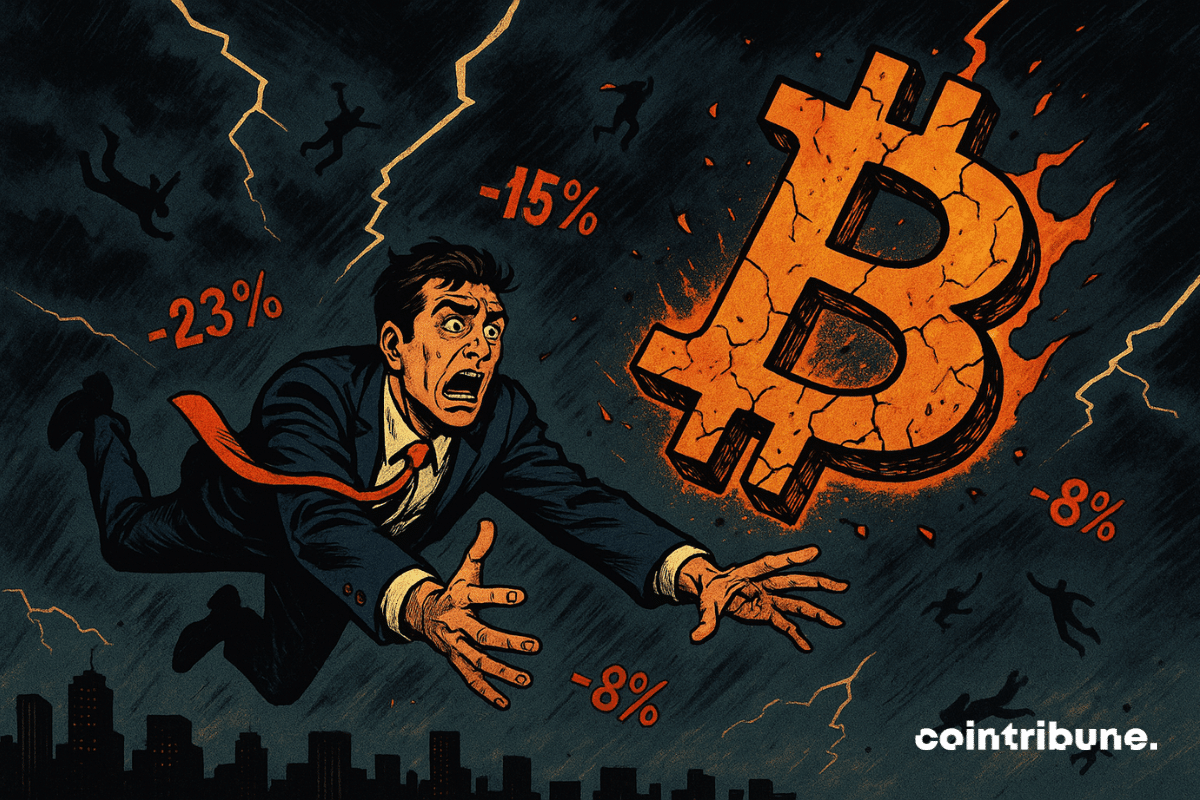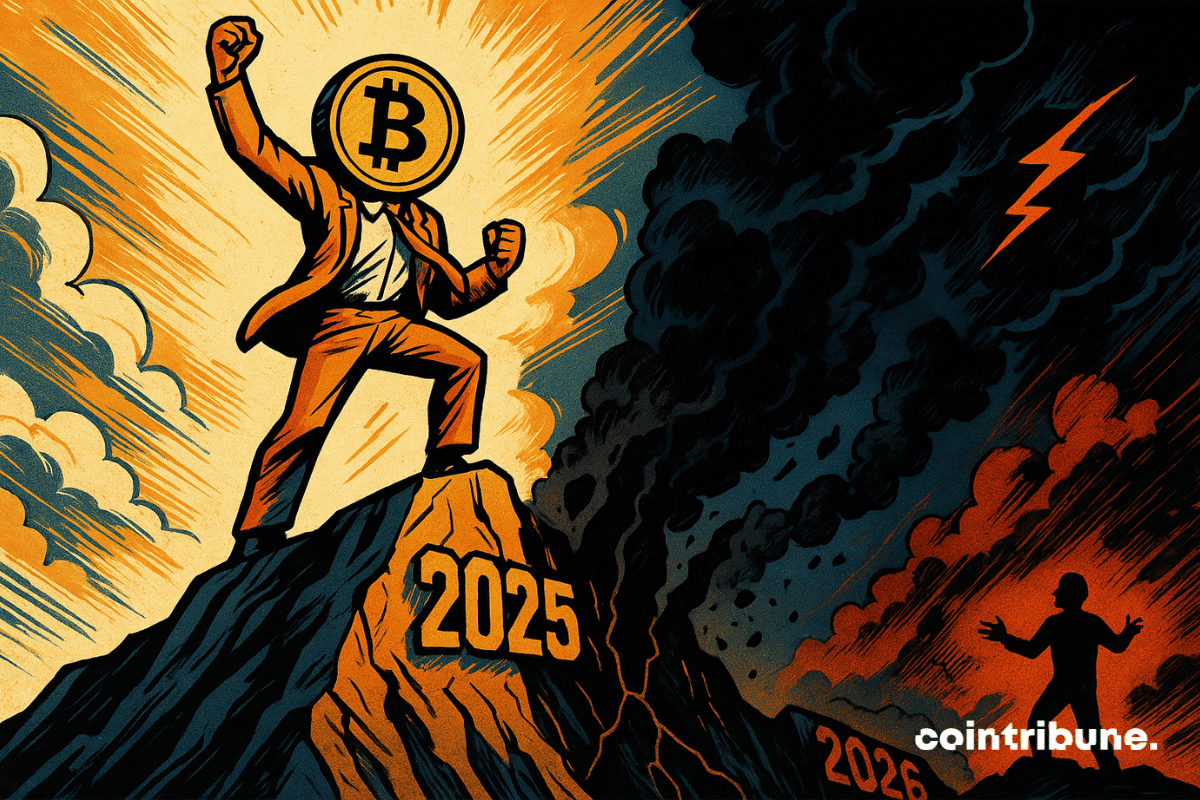While bitcoin is going through a consolidation phase around 110,000 dollars, the prevailing euphoria clashes with signals of caution. Analysts believe that the trajectory toward a new ATH will not be linear. Corrections, volatility, and regulatory uncertainty could mark the path. In a market dominated by optimism, some remind that peaks must be earned, and pullbacks are part of the journey.
Correction
As euphoria fades more and more in the crypto market, Pi Network, already controversial, has just brushed a new historic low. Officially, the global context is to blame. However, technical signals paint an even darker picture: absence of rebound, low volume, indicators in the red. Doubt is setting in. Is Pi Network losing control of its trajectory?
While the crypto market goes through a wait-and-see phase, XRP wavers on a critical threshold. Caught between alarming technical signals and persistent regulatory uncertainty, Ripple's asset could suffer a drop of 8 to 10%. A tension zone is setting in, where every indicator could tip market sentiment. For investors, the stake is no longer just the price but the psychological trajectory of an iconic asset.
Solana records a historic high: 71.8 million SOL are engaged in futures contracts. This peak in open interest could suggest a rise in strength. However, the crypto drops 18% in one week, marking one of the worst market performances. This discrepancy between bullish speculation and price collapse raises questions: is the market fueled by excessive leverage?
Bitcoin briefly plunged below $109,000, recording a three-week low. Hours before the expiration of $22 billion in options scheduled for this Friday, pressure is mounting among investors. In a context of increased volatility and macroeconomic uncertainties, positions are being urgently readjusted. The crypto market is entering a decisive sequence where each level crossed could amplify upcoming movements.
The leverage effect, driver of soaring increases, becomes a formidable trap when the market turns. Solana (SOL) suffers the consequences, with a brutal drop to $213, its lowest level in two weeks. While the Fed briefly rekindled risk appetite, persistent tensions over inflation and employment quickly reversed the trend.
September once again catches up with the crypto market. After a promising start, the trend reversed with a brutality that hits the main capitalizations. Bitcoin, Ethereum, and Dogecoin show a sharp decline, exposing a marked exhaustion of the bullish momentum. As every year at the same time, the specter of a "Red September" reappears, fueled by weakened technical signals and a sharply declining market sentiment. Once again, the scenario of a red month seems to be drawing with insistence.
The crypto market has just endured one of its harshest shocks since the start of the year. In less than 24 hours, more than 407,000 positions were liquidated, wiping out over 1.5 billion dollars of bullish bets from order books. This quick correction, triggered by the domino effect of margin calls, shook the largest capitalizations while revealing the vulnerability of a market still dominated by leverage and massive speculative movements.
Driven by 638 million dollars in inflows on its ETFs in one week, Ethereum establishes itself as the asset of the moment among institutional investors. However, technical and historical signals call for caution. With 99% of the supply currently in profit and a traditionally bearish September, the market could quickly turn.
The latest US inflation figures reignite tensions in the financial markets, and the crypto sector is not immune to this nervousness. Stuck below the $3 mark, XRP struggles to define a clear trend. In a climate where every economic data fuels speculation about the Fed's monetary policy, Ripple's asset moves in a zone of uncertainty. Between hopes for a breakout and risks of correction, pressure is mounting around a threshold that has become strategic.
XRP is going through a decisive phase. Priced at $2.81, Ripple’s token is evolving in a weakened crypto market, undermined by persistent volatility. Technical indicators paint a mixed picture: selling pressure dominates in the short term, but some long-term moving averages indicate a possible recovery. Between investor caution and hopes for a rebound, XRP is now at a strategic turning point that captures analysts' attention.
Ethereum plays the tightrope walker: programmed drop, then theatrical rise. September trembles, October rejoices. Crypto traders? They might applaud... after getting trapped.
Bitcoin wavers below 109,000 dollars, caught between macroeconomic uncertainty and unfavorable technical signals. While investors scrutinize upcoming indicators likely to guide US monetary policy, the pressure intensifies. Institutional capital outflows, tensions in derivatives products, and weakened sentiment indicators increase distrust. The market freezes in anticipation, exposed to latent volatility.
Driven by euphoria and records beyond $124,000, bitcoin seemed out of reach. However, the sudden break of a major technical support, a pillar of the uptrend, disrupts this picture. False alarm or real reversal signal? The question divides analysts and investors, at a time when certainties waver and volatility returns.
While the crypto market oscillates between euphoria and uncertainty, XRP is the subject of a serious warning. According to analyst Benjamin Cowen, the crypto could experience one last drop before reaching its cycle peak. This analysis, based not on promises but on historical technical signals, calls for caution.
When bitcoin falters, whales sell, small holders pick up, and the Fed sneezes. Crypto, this monetary theater where everyone plays their part... often without knowing the script.
In a few hours, Ethereum went from euphoria to retreat. On August 24, the crypto reached an all-time high of 4,955 dollars before losing nearly 9% shortly after, with 60 billion dollars of capitalization going up in smoke. Such a brutal correction, occurring in an already fragile market, recalls the fragility of bullish rallies in an environment still largely driven by speculation.
While the crypto market is going through a summer lull, one asset draws attention: XRP. Trapped in a tight chart pattern, it is approaching a decisive breakout point. Technical analysis leaves little doubt. A major move is looming, either upward or downward. In a context of general uncertainty, all eyes turn to this crypto whose next few days could well redefine its path.
While Ether (ETH) is reaching new highs with a surge of more than 25% in August, investors wonder: are we witnessing a lasting consolidation or just a rebound before a correction? Driven by ETF inflows and a favorable macroeconomic climate, ETH is once again attracting institutional investors. However, history tempers optimism. Since 2016, every August rally has been followed by a bearish September. Will the current euphoria mark a break or will it reactivate the market's seasonal mechanics?
Bitcoin reached a peak above 124,000 dollars… before collapsing below 115,000 in a few days. This brutal drop was not limited to the price. It triggered a massive capitulation of short-term investors, with billions liquidated at a loss. This rare on-chain shock reveals a deep psychological shift in the market. The bullish sentiment is wavering, and one question arises: is this a simple correction or the beginning of a lasting retreat?
Nearly 94% of XRP investors are now in the green, a level rarely reached in crypto history. Driven by a surge up to $3.11, the fourth largest crypto by market capitalization triggers as much euphoria as concern. Indeed, previous instances where XRP reached such profitability were followed by sharp corrections, in 2018 as in 2021. This time, is it a new bull cycle... or a precursor sign of a brutal reversal?
XRP, long held back by its judicial battle with the SEC, returns to the forefront. While institutional investors quietly strengthen their positions, a series of massive liquidations shakes the market. Between unstable technical signals and behind-the-scenes accumulation strategies, crypto is going through a zone of high instability. Should this be seen as a simple correction or the beginning of a strategic repositioning?
Less than 48 hours after hovering near a peak at 124,000 dollars, bitcoin falls below 117,000 while ether drops to 4,400. This brutal but seemingly classic correction exposed a weak link in the ecosystem: publicly traded companies exposed to cryptos. Thus, this segment long supported by bullish euphoria takes the reversal full on. The market, meanwhile, reminds that it never rewards excess for long.
Sentora (formerly IntoTheBlock) reveals that 97% of Ethereum addresses are in profit, a rarely reached level shaking the market. This record recalls the 2021 bull run, when euphoria had preceded massive profit-taking. Today, analysts are divided between optimism and caution, seeing in this statistic either the sign of a new bullish momentum or the warning of a possible reversal.
After reaching an unprecedented high of $123,000, bitcoin begins a clear slowdown. The euphoria of recent weeks gives way to a consolidation phase, where every market movement is closely scrutinized. The latest Institutional Insights report from CryptoQuant reveals tangible signs of exhaustion: momentum decline, liquidity slumps, and sustained profit taking. This cocktail places the flagship asset at a crucial moment, between technical pause and correction risk.
In an ecosystem already weakened by bitcoin volatility, the project based on mobile mining dangerously approaches its historic low. Long supported by a massive but controversial community, Pi Network now faces an acute confidence crisis. Extreme correlation to BTC, selling pressure, technical indicators in the red: warning signals are piling up. Can the project still avoid going off the rails?
After months of recovery, the bullish momentum of the bitcoin market is abruptly fading. All indicators, spot, derivatives, ETFs, turn red, revealing a drop in liquidity, a decline in risk appetite, and a general slowdown. The latest Glassnode report confirms a phase change: euphoria gives way to caution, in a fragile and unpredictable market context.
Bitcoin flirts with 114,000 dollars, but behind this stability, some analysts are sounding the alarm. A new market reading, based on Elliott Wave theory, announces a peak at 140,000 dollars by the end of this year… followed by a sharp decline in 2026. As euphoria spreads among investors, this projection invites looking beyond the short term.
Bitcoin lost 7.5% after nearly touching $123,250, briefly reviving fears of a lasting correction. However, some analysts see an ideal configuration, described as a "perfect bottom." For them, this technical pullback would be less a sign of weakness than a strategic springboard announcing a major rebound.
In an already tense crypto market, XRP is drawing attention for the wrong reasons. Several technical and on-chain indicators are turning red, signaling growing selling pressure and marked investor disengagement. The decline in leverage exposure, combined with significant outflows, fuels the risk of key support breaks. If the momentum does not reverse quickly, crypto could enter a more pronounced correction phase, revealing increasing vulnerability to market uncertainties.
